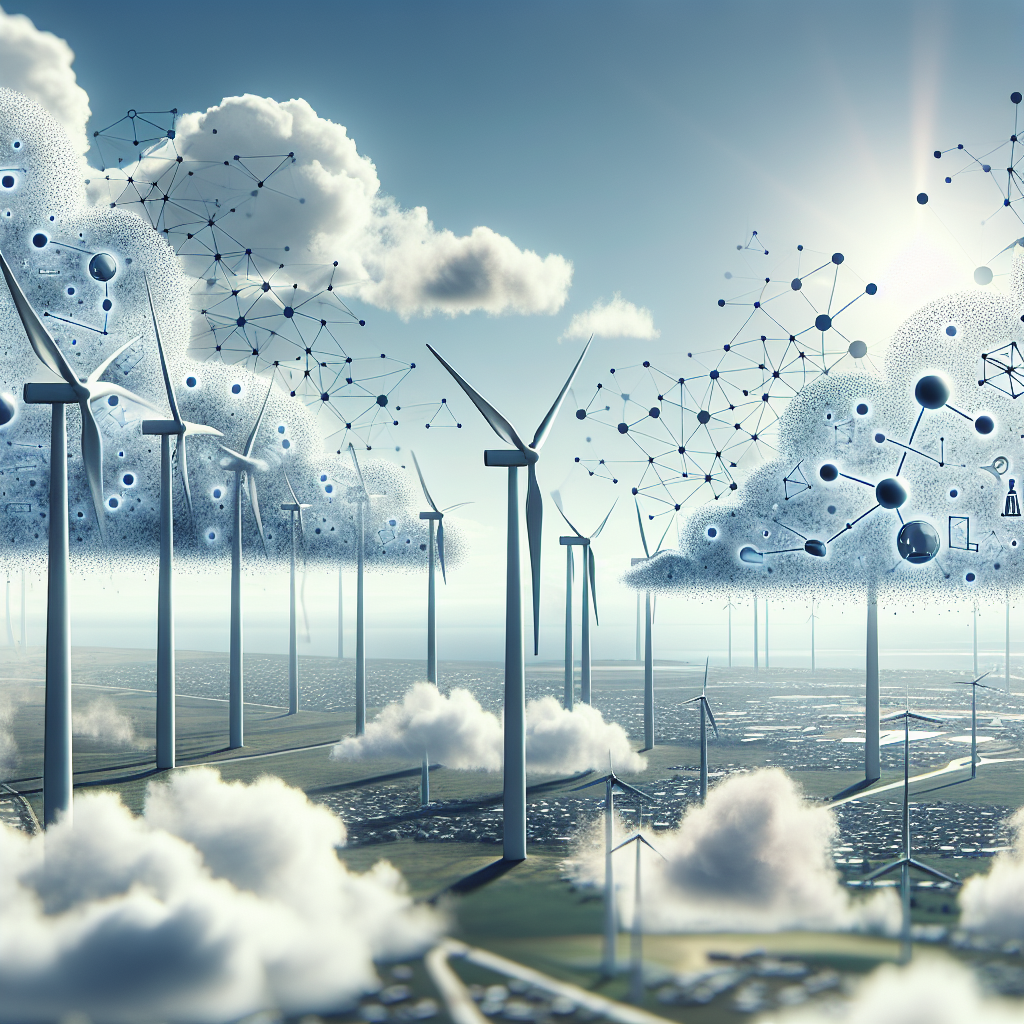Wind energy is a rapidly growing renewable energy source that has the potential to significantly reduce carbon emissions and combat climate change. However, the efficiency of wind energy systems can be greatly improved by utilizing machine learning algorithms to optimize their performance. In this article, we will discuss how machine learning can be used to enhance the efficiency of wind energy systems and ultimately increase their output.
Wind energy systems, such as wind turbines, are complex machines that are influenced by a multitude of variables, including wind speed, direction, and turbulence. Traditional control systems for wind turbines are often based on fixed rules and are unable to adapt to changing conditions in real-time. This can result in suboptimal performance and reduced energy generation.
Machine learning, on the other hand, offers a more dynamic and adaptive approach to optimizing wind energy systems. By using algorithms that can learn from data and adjust their parameters accordingly, machine learning can help to improve the efficiency of wind turbines and maximize their energy output.
One of the key ways in which machine learning can enhance the efficiency of wind energy systems is through predictive maintenance. By analyzing data on the performance of wind turbines and predicting when maintenance is needed, machine learning algorithms can help to prevent costly breakdowns and downtime. This can result in significant cost savings for wind energy operators and increase the overall reliability of their systems.
Another way in which machine learning can optimize wind energy efficiency is through advanced control strategies. By using algorithms that can analyze real-time data on wind speed and direction, machine learning can help to adjust the pitch and yaw of wind turbines to maximize energy generation. This can result in higher energy output and increased profitability for wind energy operators.
Additionally, machine learning can be used to optimize the layout of wind farms. By analyzing data on wind patterns and turbulence, machine learning algorithms can help to determine the optimal placement of wind turbines within a wind farm to maximize energy generation. This can result in a more efficient use of land and resources, as well as increased energy output.
Overall, the use of machine learning in wind energy systems has the potential to greatly enhance their efficiency and increase their output. By analyzing data, predicting maintenance needs, and optimizing control strategies, machine learning algorithms can help to maximize the performance of wind turbines and ultimately contribute to a more sustainable energy future.
FAQs:
Q: How does machine learning improve the efficiency of wind energy systems?
A: Machine learning algorithms can analyze data on wind speed, direction, and turbulence to optimize the performance of wind turbines. By adjusting control strategies and predicting maintenance needs, machine learning can help to maximize energy generation and increase the efficiency of wind energy systems.
Q: What are the benefits of using machine learning in wind energy systems?
A: The use of machine learning in wind energy systems can result in higher energy output, reduced maintenance costs, and increased profitability for wind energy operators. Machine learning algorithms can help to optimize control strategies, predict maintenance needs, and improve the layout of wind farms to maximize efficiency.
Q: How can machine learning be applied to wind energy systems?
A: Machine learning algorithms can be used to analyze data on wind speed, direction, and turbulence to optimize the performance of wind turbines. By adjusting control strategies, predicting maintenance needs, and optimizing the layout of wind farms, machine learning can help to enhance the efficiency of wind energy systems.
Q: What are some examples of machine learning applications in wind energy?
A: Predictive maintenance, advanced control strategies, and optimal layout planning are some examples of how machine learning can be applied to improve the efficiency of wind energy systems. By analyzing data and adjusting parameters in real-time, machine learning algorithms can help to maximize energy generation and increase the overall performance of wind turbines.

